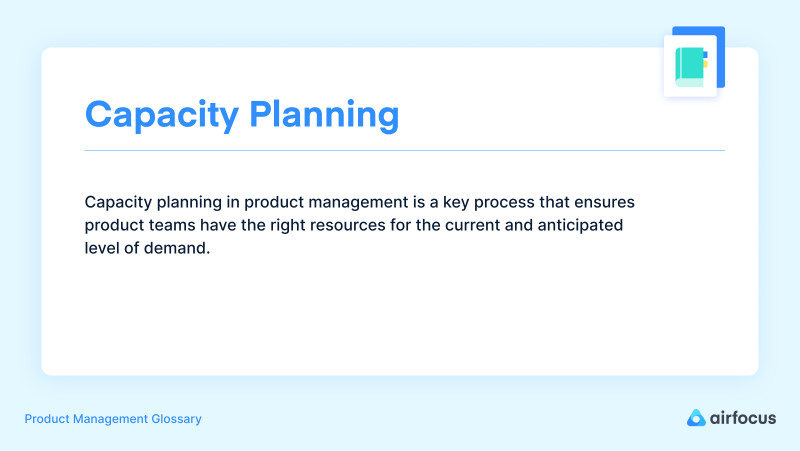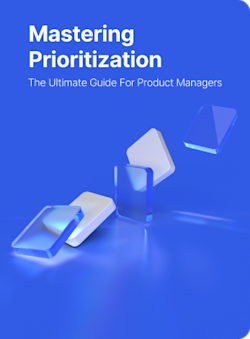Capacity Planning in Product Management
What is capacity planning in product management?
Capacity Planning Definition
Capacity planning in product management is a key process that ensures product teams have the right resources for the current and anticipated level of demand. Capacity planning helps product managers (PMs) reduce the risk of being unable to meet demand. This allows businesses to avoid potentially costly disruptions that frustrate customers, impact reputation, and harm revenue.
With capacity planning in product management, essential resources typically include design software, development tools, team members, and budget.
Benefits of capacity planning in product management
Here are the main benefits of capacity planning in product management:
Identify inefficiencies
The most important benefit of capacity planning is that product managers can pinpoint issues that could negatively affect efficiency. For example, technical problems arising from outdated software should be identified and resolved to prevent delays.
Increase product delivery capacity
Any capacity-related difficulties could leave users without the product they have paid for, fully or partially, and reduce your company’s credibility. Capacity planning helps managers understand how they can deliver products to customers in the most efficient, hassle-free way.
Make better decisions
Analyzing past demand and forecasting future demand allows PMs to make better, more data-driven decisions.
Better plan your budget
Capacity planning helps PMs understand the amount of money required to deliver products at the relevant level of demand. As a result, they can set an appropriate budget for a product, upgrade, or feature.
Help avoid team burnout
Capacity planning for product management reveals what team members can realistically and comfortably achieve within a specific period. That eliminates the risk of demanding too much of team members and harming morale (as well as product quality).
Capacity Planning strategies and methodologies
Here are three well-known strategies and methodologies for capacity planning:
Lag Strategy: Maintaining enough resources to meet real-time demand.
Lead Strategy: Boosting production capacity to meet expected demand.
Match Strategy: A mix of lag and lead. Regularly revise your demand forecasts to align with shifting capacity requirements.
Capacity planning step-by-step
Effective capacity planning in product management includes the following steps:
1. Assessing current resources:
Assess key factors such as the size of your workforce, the tools and technology currently used, and the available resources you’ll need.
2. Forecasting likely demand:
Predicting the demand for upcoming products will help you determine the capacity required and ensure you have the right resources.
3. Aligning capacity with goals:
Study the predicted capacity requirements and make sure that resource allocation aligns with your business goals.
4. Track and report capacity:
Keep track of resources to monitor those used and adjust as required.
Example of capacity planning for product managers
Capacity planning helps teams allocate resources effectively across multiple projects. For example, a product team might need to balance developing new features with ongoing maintenance tasks.
The product manager can prioritize tasks and assign resources based on project urgency and impact by assessing the team's available capacity, including developers, designers, and QA testers. This ensures the team isn’t overcommitted and can deliver high-quality outcomes on time, without burnout. Capacity planning also allows for flexibility in adjusting priorities as business needs evolve.
Capacity planning in product management best practices
Here are a few best practices to follow when capacity planning:
Know your overall demand
Understand overall demand across maintaining and growing the company. Determine the capacity required to maintain work to a satisfactory standard, which will help you plan for increased demand more effectively.
Regularly review your capacity plan and process
Check your capacity plan and process often to pinpoint improvement opportunities and ensure it is based on up-to-date research.
Try different solutions to capacity problems
Exploring diverse solutions can help managers find the most efficient or budget-friendly options.
Capacity plan with a cross-functional team
Planning with a cross-functional team can aid problem-solving through different viewpoints and skill sets and encourage effective interdepartmental communication.
Allocate resources based on task priority
Ensure you allocate enough focus, expertise, and resources to the most critical tasks.

General FAQ

Glossary categories
Prioritize with confidence

Experience the new way of doing product management








